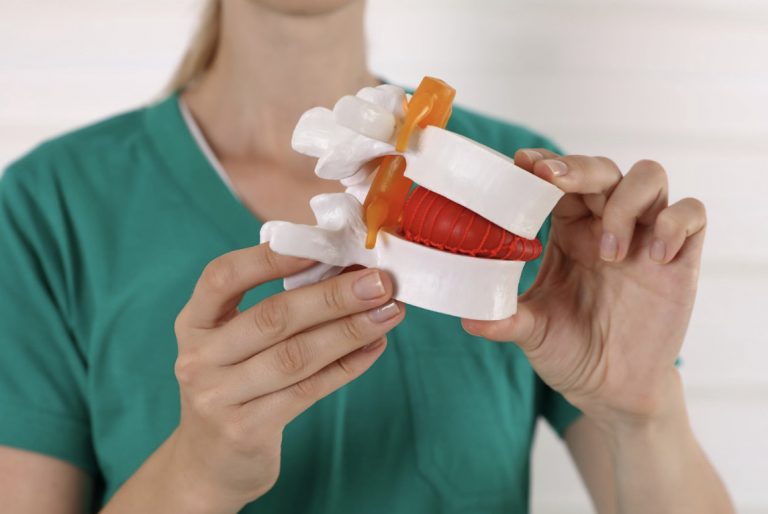Decompression treatment options focus on releasing pressure that has built up around spinal nerves. Because the spinal cord and the nerve roots that branch off of it are the origin of all nerves in the body, pressure on these nerves can cause radiating discomfort to the extremities.
It is important to keep in mind that the term decompression treatment can span a wide range of pain relief methods, from conservative treatment to surgery. If you are looking to find lasting relief from back pain and a return to the people and activities you love, learning more about the causes of nerve compression and the full range of decompression treatments available can be a great first step.
The Anatomy Of Nerve Compression
Nerve compression in the neck and back is a result of abnormalities in the spinal anatomy that infringe on surrounding spinal nerves, such as nerve roots or the spinal cord. The spine consists of vertebrae, shock-absorbing discs, muscles, ligaments, and joints. The joints and discs are especially prone to degeneration as time goes by, and herniated discs, bulging discs, or bone spurs can protrude into the spinal canal and interfere with the normal function of nerves, causing symptoms of numbness, weakness, tingling, and pain.
Types Of Decompression Treatment
In addition to basic conservative treatments like rest, ice, heating pads, physical therapy, and medication, your doctor may recommend one of the following forms of decompression treatment to relieve neck or back pain caused by a spine condition:
- Nonsurgical Decompression. This type of decompression treatment can involve chiropractic work and decompression tables, which are traction devices that try and stretch protruding disc material back into place through inversion or negative pressure. This generally provides only temporary relief, requiring patients to undergo multiple sessions.
- Decompression Surgery. Most neck and back decompression surgeries are performed as traditional open spine procedures that require hospitalization. In some cases after the displaced disc is removed, a spinal fusion is performed for added stability. Downsides include nerve damage, muscle trauma, failed back surgery syndrome, and difficult physical rehabilitation.
- Minimally Invasive Decompression Surgery. This type of procedure is performed on an outpatient basis and uses advanced technology to remove the spinal anatomy causing nerve compression, all through a small muscle-sparing incision.
Minimally Invasive Options At BEST Health System
If you feel that a minimally invasive decompression procedure may be right for you, contact BEST Health System. Our safer and more effective outpatient surgeries can help patients find relief from neck and back pain.
For more information contact BEST Health System today!
